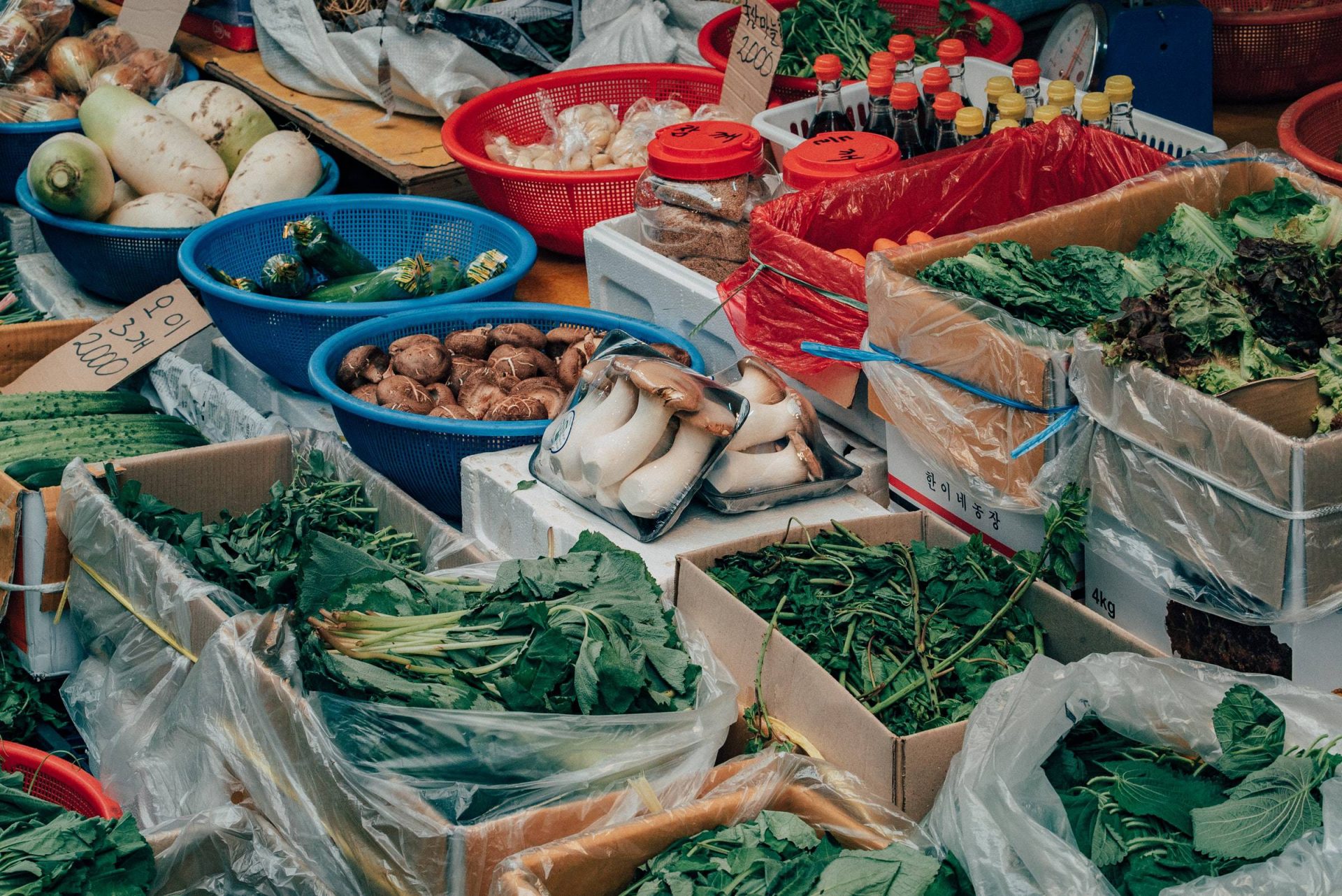Table of Content
Farmers market business plan for starting your own business
One of the most lucrative businesses that you can start right now and that too with the least investment is that of farmer’s market. If you want to know how to start a farmers market business, just stick around till the endo of this document as this is a complete business plan for farmers market and has all the information, stats, and guidance that you need to start this business.
We will start this business plan with strategic plan of organization which is the most important part of any business plan and will then navigate through everything from the capital and workforce required for the business to the market trends and a solid marketing analysis and plan that will make it possible for you to start and run the business with efficiency.
Executive Summary
2.1 The Business
Packard Farmer’s Market will be a registered and licensed farmer’s market outside of Dallas, Texas. The owner, Stephen Packard, wanted to go for a retail store business plan, but he has shifted to starting a farmers market business because there is a lot of potential for this business in the area. You can also use this business plan for a banker to get financing for the business.
2.2 Management of Farmer’s Market Business
Note
If you want to know how to start a business at a farmers market, the most important thing to note is that this is a services business and needs a strong management to be successful in the true sense.
To cater for that, Stephen will need to hire the appropriate staff to look after the day-to-day operations of the business. This will need five brokers to buy the products from the farmers and a 3 more to sell it to the buyers. In addition to that, a manager will be needed to look after the operations of the business.
An accountant will also be necessary to keep track of all the money flowing in and out of the business at a daily basis.
2.3 Customers of Farmer’s Market Business
The next thing we need to determine for launching business at farmers market plan is the customers we will be serving. The customers of the market will be:
- Farmers coming in to sell their products.
- Wholesale buyers coming to purchase the product in bulk.
- Domestic buyers coming to buy retail quantities of the product.
- Food processing companies looking for agricultural products.
2.4 Business Target
The subjective target of Packard Farmer’s Market is to provide the best services to farmers as well as buyers in the area of Dallas. By doing that, Stephen targets to become one of the leading farmer’s market broker in the state of Texas.
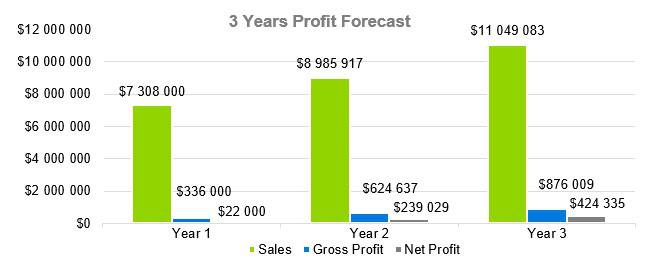
Company Summary
3.1 Company Owner
The owner of the business, Stephen Packard, will easily get farmers market business license because he has a lot of experience in this field. He worked as a broker at several farmer’s market and knows all the ins and outs of the industry. This business plan has a number of things in common with a retail discount store business plan, as you will see down the line.
3.2 Why the Farmer’s Market Business is being started?
Another important thing that we need to talk about in this farmers market business plan sample is the reason why this business is being started. There are two reasons for that. Firstly, there is no market farmer business type in the area to cater the needs of the farmers.
Secondly, Stephen was fired by his former boss in a farmer’s market nearby and he has decided to send him out of the business by making an extremely attractive farmers market business card that will just bankrupt his former boss for good.
3.3 How the Farmer’s Market Business will be started?
Step1: Plan Everything
Much like a pig farming business plan, the main, and the first thing involved in starting this business is planning. Stephen needs to plan everything from the expenses to the place of the market to make it successful. The important thing to note here is that even though not a lot of capital is needed to start a business and no inventory is involved, Stephen needs to have a solid plan to make sure that his business can compel the customers (both buyers and purchasers) to come to his business and leave the ones they have been working with for years.
Step2: Get the Necessary Permits
The next thing that Stephen and his team need to do is to get licensed, bonded, and insured to start the business. Unlike a aquaponics business plan, it is important to get permits from the local trade union and governmental bodies to start the business.
Step3: Establish the Place of Business
The next thing Stephen has to do to start the business is to establish the point from where he will be operating the business and where he will interact the customers from. It is important to have a place large enough to keep the products safe if they have to be purchased in large quantities in the harvesting season.
Step4: Promotion and Marketing
This is the most important part of starting this business. It is important because all the farmers as well as buyers in the area are doing business with someone else for years and have permanent accounts with them. We’ll have to put in some real marketing effort to make them come and do business with us.
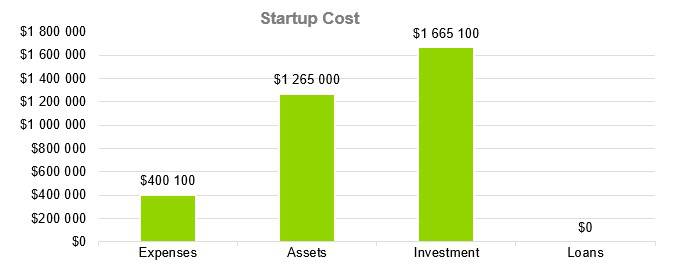
| Start-up Expenses | |
| Legal | $253,100 |
| Consultants | $0 |
| Insurance | $31,000 |
| Rent | $34,000 |
| Research and Development | $26,000 |
| Expensed Equipment | $52,000 |
| Signs | $4,000 |
| TOTAL START-UP EXPENSES | $400,100 |
| Start-up Assets | $348,000 |
| Cash Required | $367,000 |
| Start-up Inventory | $42,000 |
| Other Current Assets | $224,000 |
| Long-term Assets | $284,000 |
| TOTAL ASSETS | $1,265,000 |
| Total Requirements | $1,665,100 |
| START-UP FUNDING | |
| Start-up Expenses to Fund | $400,100 |
| Start-up Assets to Fund | $1,265,000 |
| TOTAL FUNDING REQUIRED | $1,665,100 |
| Assets | |
| Non-cash Assets from Start-up | $1,655,000 |
| Cash Requirements from Start-up | $380,000 |
| Additional Cash Raised | $55,000 |
| Cash Balance on Starting Date | $36,000 |
| TOTAL ASSETS | $2,126,000 |
| Liabilities and Capital | |
| Liabilities | $30,000 |
| Current Borrowing | $0 |
| Long-term Liabilities | $0 |
| Accounts Payable (Outstanding Bills) | $48,500 |
| Other Current Liabilities (interest-free) | $0 |
| TOTAL LIABILITIES | $78,500 |
| Capital | |
| Planned Investment | $1,665,100 |
| Investor 1 | $0 |
| Investor 2 | $0 |
| Other | $0 |
| Additional Investment Requirement | $0 |
| TOTAL PLANNED INVESTMENT | $1,665,100 |
| Loss at Start-up (Start-up Expenses) | $382,400 |
| TOTAL CAPITAL | $2,047,500 |
| TOTAL CAPITAL AND LIABILITIES | $2,126,000 |
| Total Funding | $1,665,100 |
Services
This is the most important part of this business plan. As the business is all about services more than it is about products, we need to carefully select which services we will be providing. The trouble with deciding the services for a farmers market business plan template is that there are too many services that such businesses provide. We need to go only for the business service of farmers market that are financially viable for us.
- Buying Agricultural Product
This is the main service around which this whole business will be based. We will buy agricultural produce including fruits, vegetables, grain, and cotton from farmers. The produce will be bough on market competitive prices.
- Buyer-Seller Arbitrage
Some time, in a farmer’s market, it is not the right thing to purchase the produce and then sell it. Arbitrage services will be provided by the brokers that we will hire and we will charge a contingency fee from both parties for our services.
- Loan Provision for Farmers
Another of the important services is providing loans to the farmers that they reimburse when they sell their produce. This is a lucrative aspect of this business as the interest rates on these loans are pretty high.
- Grain and Agricultural Produce Storage
We will have a large storage facility where we can store other people’s agricultural produce and charge them a fee based on duration and volume of the storage.
Marketing Analysis of Farmers Market Business
Great service
Great service. Good turnaround time and quality work. Thanks!
If you want to know how to start farmers market business, the first thing you need to do is the marketing analysis of the business. This is the step where you will discover in detail what are the market variables that you are up against. You need to do this thoroughly before you start a farmers market business
5.1 Market Trends
If you are planning on opening a farmers market business, you need to know that no matter how good farmers market business ideas you might have, you can just not be successful without seeing the market trends of the field you are going to enter.
The farmer’s market business in the US is one of the biggest ones in the world and as the US is expanding its agricultural exports, it is the best time to enter this business. The profit margin here is even more than that of a hydroponics farm business plan.
5.2 Marketing Segmentation
The market segments that Packard Farmer’s Market will be serving will be the following:
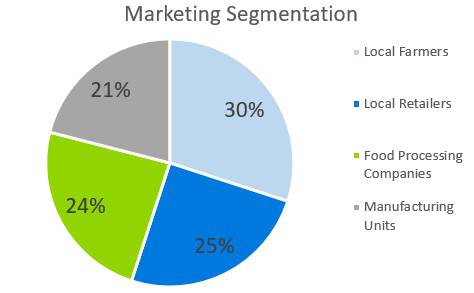
UK Start-Up Visa Business Plan
5.2.1 Local Farmers
Our primary clients will be the local farmers who wan to sell their agricultural produce. We will offer them good rates and will be willing to give them loans in advance. The success of this business depends on working with as many farmers as we can and we will spare no expense to do that.
5.2.2 Local Retailers
We will sell the produce to the local retailers. These people will mostly buy fruits and vegetables.
5.2.3 Food Processing Companies
This market segment will buy fruits, vegetables, and grain. These will be our permanent customers and will bring a large part of our income.
5.2.4 Manufacturing Units
This market segment can buy any thing from seasonal fruits to cotton and tobacco. We will try to have as many of these clients as possible as they are the most high-paying ones.
| Market Analysis | |||||||
| Potential Customers | Growth | Year 1 | Year 2 | Year 3 | Year 4 | Year 5 | CAGR |
| Local Farmers | 30% | 34,000 | 36,000 | 38,000 | 40,000 | 41,000 | 10.00% |
| Local Retailers | 25% | 27,000 | 29,000 | 31,000 | 32,000 | 33,000 | 10.00% |
| Food Processing Companies | 24% | 25,000 | 26,000 | 28,000 | 29,000 | 30,000 | 10.00% |
| Manufacturing Units | 21% | 20,000 | 21,000 | 23,000 | 24,000 | 25,000 | 11.00% |
| Total | 100% | 106,000 | 112,000 | 120,000 | 125,000 | 129,000 | 10% |
5.3 Business Target
- To become the biggest farmer’s market broker in the area.
- To expand the business to other cities and start a chain of outlets.
- To give the farmers the best rates for their produce.
- To be the biggest suppliers of agricultural produce in the area for domestic, business, and industrial clients.
5.4 Product Pricing
We will buy the products at a higher price than the market and sell them at a lower price to attract business. Once we have sufficient customers, we can change the rates to more profitable ones.
Marketing Strategy
It will not be easy to attract customers who are already working with other farmer’s market brokers. To achieve that, we need to have a solid farm business marketing strategy. This is the only thing that can make this business successful and profitable for us in a market where loyalty is the name of the game and people are working with our competitors for years, even generations.
Here’s the competitive analysis for this business plan for a farmers market that will make our business a success.
6.1 Competitive Analysis
- The biggest competitive edge that we have is the location we have chosen for the business. The farmers of the area have to take the produce 100 miles to the other businesses. If we can offer them a price difference that is more than the freight charges, we can make it big in the business.
- Second thing that we have noticed is that the other businesses in the area have a very high interest rate for the loans they offer to the farmers. We can also capitalize on this aspect.
- Thirdly, we will offer delivery services to the buyers which will also give us a competitive edge.
6.2 Sales Strategy
- We will buy the produce from the farmers at a higher rate to attract them to do business with us.
- For the products we sell, we will keep the price lower than what the competitors offer. This will decrease the profit margin but will be great for giving our business customers in the start.
- We will also use multiple ways to advertise out business in order to attract more customers.
6.3 Sales Monthly
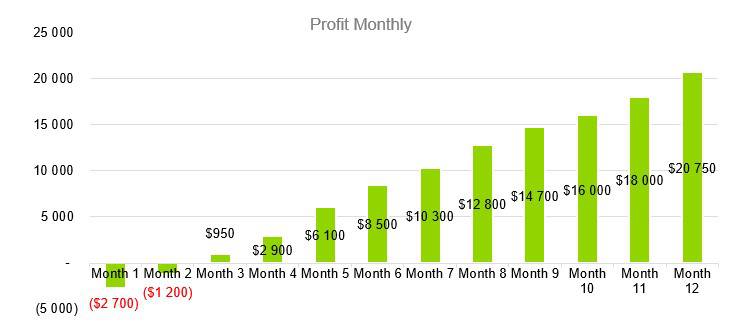
6.4 Sales Yearly
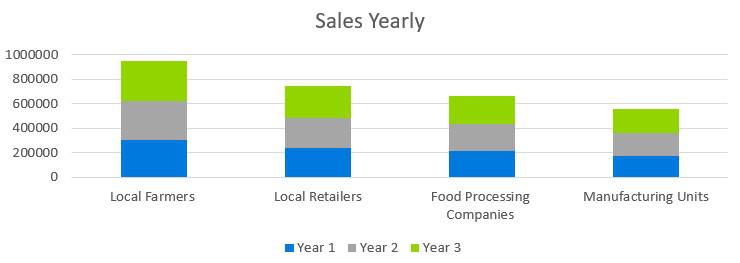
6.5 Sales Forecast
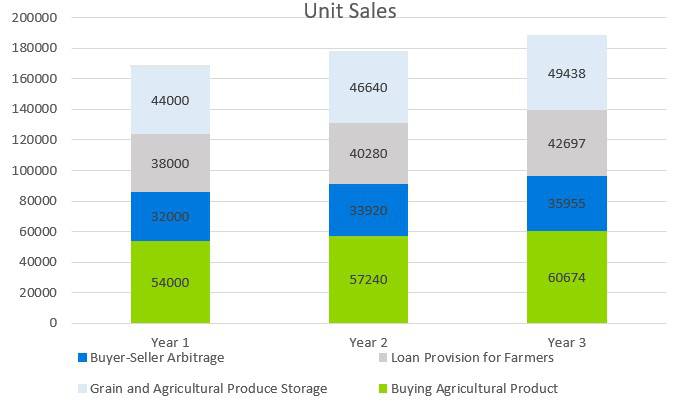
| Sales Forecast | |||
| Unit Sales | Year 1 | Year 2 | Year 3 |
| Buying Agricultural Product | 54,000 | 57,240 | 60,674 |
| Buyer-Seller Arbitrage | 32,000 | 33,920 | 35,955 |
| Loan Provision for Farmers | 38,000 | 40,280 | 42,697 |
| Grain and Agricultural Produce Storage | 44,000 | 46,640 | 49,438 |
| TOTAL UNIT SALES | 168,000 | 178,080 | 188,765 |
| Unit Prices | Year 1 | Year 2 | Year 3 |
| Buying Agricultural Product | $40.00 | $46.40 | $53.82 |
| Buyer-Seller Arbitrage | $45.00 | $52.20 | $60.55 |
| Loan Provision for Farmers | $42.00 | $48.72 | $56.52 |
| Grain and Agricultural Produce Storage | $48.00 | $55.68 | $64.59 |
| Sales | |||
| Buying Agricultural Product | $2,160,000.00 | $2,655,936.00 | $3,265,738.91 |
| Buyer-Seller Arbitrage | $1,440,000.00 | $1,770,624.00 | $2,177,159.27 |
| Loan Provision for Farmers | $1,596,000.00 | $1,962,441.60 | $2,413,018.19 |
| Grain and Agricultural Produce Storage | $2,112,000.00 | $2,596,915.20 | $3,193,166.93 |
| TOTAL SALES | $7,308,000.00 | $8,985,916.80 | $11,049,083.30 |
| Direct Unit Costs | Year 1 | Year 2 | Year 3 |
| Buying Agricultural Product | $38.00 | $43.00 | $49.00 |
| Buyer-Seller Arbitrage | $43.00 | $49.00 | $56.00 |
| Loan Provision for Farmers | $40.00 | $45.00 | $52.00 |
| Grain and Agricultural Produce Storage | $46.00 | $52.00 | $60.00 |
| Direct Cost of Sales | |||
| Buying Agricultural Product | $2,052,000.00 | $2,461,320.00 | $2,973,045.60 |
| Buyer-Seller Arbitrage | $1,376,000.00 | $1,662,080.00 | $2,013,491.20 |
| Loan Provision for Farmers | $1,520,000.00 | $1,812,600.00 | $2,220,233.60 |
| Grain and Agricultural Produce Storage | $2,024,000.00 | $2,425,280.00 | $2,966,304.00 |
| Subtotal Direct Cost of Sales | $6,972,000.00 | $8,361,280.00 | $10,173,074.40 |
Personnel plan
One of the biggest troubles with the farmers market business model is that it requires a lot of skilled and unskilled workers. We need to have all kinds of people for this from daily wagers to college graduates. Just like the mushroom growing business plan, the workforce is what can make our venture a successful one.
7.1 Company Staff
Stephen will be the owner and CEO of the company and will hire the following staff to help him run the company.
- 3 Managers for liaison, operations, and marketing.
- 5 Brokers for purchasing and selling the product.
- 1 Accountant to keep track of the money.
- 2 Surveyors to vet the farmers before giving out a loan.
- 2 Drivers for delivering the produce to the buyers.
7.2 Average Salary of Employees
| Personnel Plan | |||
| Year 1 | Year 2 | Year 3 | |
| Operations Manager | $13,000 | $14,300 | $15,730 |
| Liaison Manager | $12,000 | $13,200 | $14,520 |
| Marketing Manager | $12,000 | $13,200 | $14,520 |
| Brokers | $50,000 | $55,000 | $60,500 |
| Accountant | $9,000 | $9,900 | $10,890 |
| Surveyors | $18,000 | $19,800 | $21,780 |
| Drivers | $17,000 | $18,700 | $20,570 |
| Total Salaries | $131,000 | $144,100 | $158,510 |
Financial Plan
Lastly, we need to have a financial plan to start and operate a profitable farmers market business. This will cover all the expenses that we need to have in order to start the business and keep it running until it starts making a profit.
We’ll need to have money for:
- Establishing the business.
- Buying the produce from the farmers.
- Giving loans to the farmers.
- Buying delivery vehicles.
- Salaries of the employees for the first six months.
- Marketing and advertisement.
8.1 Important Assumptions
| General Assumptions | |||
| Year 1 | Year 2 | Year 3 | |
| Plan Month | 1 | 2 | 3 |
| Current Interest Rate | 8.18% | 8.23% | 8.29% |
| Long-term Interest Rate | 8.45% | 8.49% | 8.55% |
| Tax Rate | 24.49% | 24.80% | 25.12% |
| Other | 0 | 0 | 0 |
8.2 Break-even Analysis
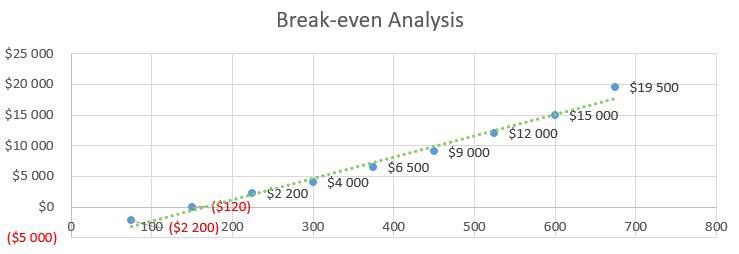
| Break-Even Analysis | |
| Monthly Units Break-even | 5344 |
| Monthly Revenue Break-even | $133,230 |
| Assumptions: | |
| Average Per-Unit Revenue | $235.00 |
| Average Per-Unit Variable Cost | $0.69 |
| Estimated Monthly Fixed Cost | $165,020 |
8.3 Projected Profit and Loss
| Pro Forma Profit And Loss | |||
| Year 1 | Year 2 | Year 3 | |
| Sales | $7,308,000 | $8,985,917 | $11,049,083 |
| Direct Cost of Sales | $6,972,000 | $8,361,280 | $10,173,074 |
| Other | $0 | $0 | $0 |
| TOTAL COST OF SALES | $6,972,000 | $8,361,280 | $10,173,074 |
| Gross Margin | $336,000 | $624,637 | $876,009 |
| Gross Margin % | 4.60% | 6.95% | 7.93% |
| Expenses | |||
| Payroll | $131,000 | $144,100 | $158,510 |
| Sales and Marketing and Other Expenses | $137,000 | $140,000 | $144,000 |
| Depreciation | $2,300 | $2,350 | $2,480 |
| Leased Equipment | $0 | $0 | $0 |
| Utilities | $2,900 | $3,000 | $3,100 |
| Insurance | $2,100 | $2,100 | $2,100 |
| Rent | $3,200 | $3,300 | $3,400 |
| Payroll Taxes | $30,000 | $31,000 | $32,000 |
| Other | $0 | $0 | $0 |
| Total Operating Expenses | $308,500 | $325,850 | $345,590 |
| Profit Before Interest and Taxes | $27,500 | $298,787 | $530,419 |
| EBITDA | $27,500 | $298,787 | $530,419 |
| Interest Expense | $0 | $0 | $0 |
| Taxes Incurred | $5,500 | $59,757 | $106,084 |
| Net Profit | $22,000 | $239,029 | $424,335 |
| Net Profit/Sales | 0.30% | 2.66% | 3.84% |
8.3.1 Profit Monthly
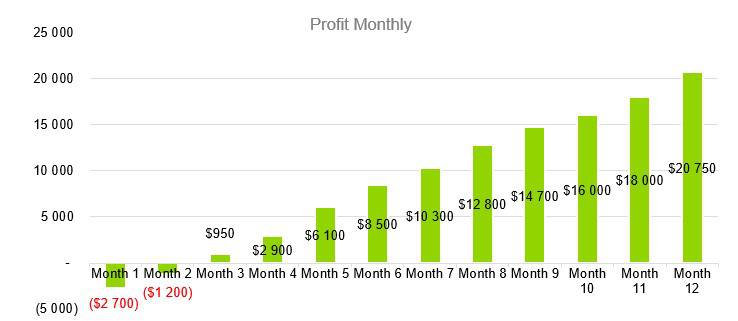
8.3.2 Profit Yearly
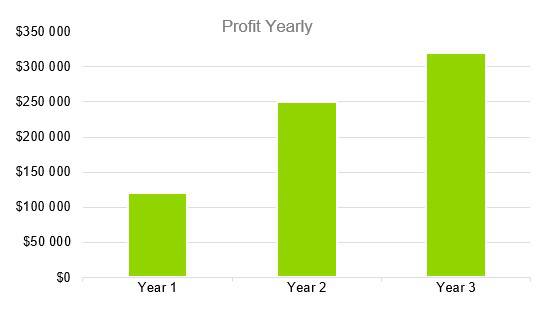
8.3.3 Gross Margin Monthly
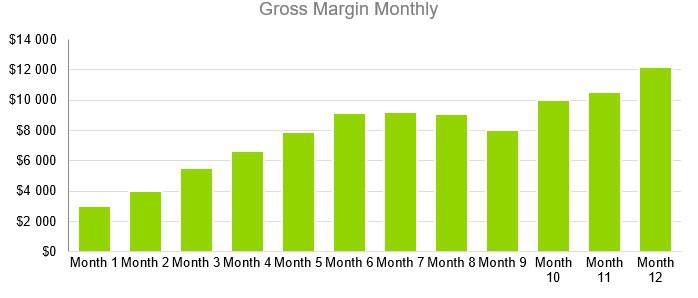
8.3.4 Gross Margin Yearly
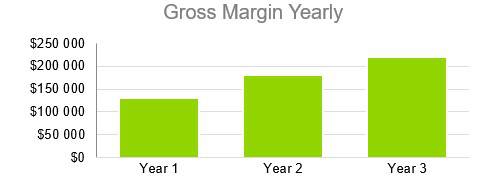
8.4 Projected Cash Flow
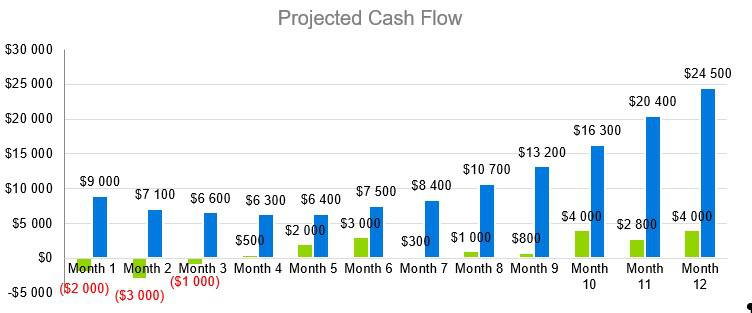
| Pro Forma Cash Flow | |||
| Cash Received | Year 1 | Year 2 | Year 3 |
| Cash from Operations | |||
| Cash Sales | $50,000 | $54,000 | $58,320 |
| Cash from Receivables | $23,000 | $24,840 | $26,827 |
| SUBTOTAL CASH FROM OPERATIONS | $73,000 | $79,570 | $85,936 |
| Additional Cash Received | |||
| Sales Tax, VAT, HST/GST Received | $0 | $0 | $0 |
| New Current Borrowing | $0 | $0 | $0 |
| New Other Liabilities (interest-free) | $0 | $0 | $0 |
| New Long-term Liabilities | $0 | $0 | $0 |
| Sales of Other Current Assets | $0 | $0 | $0 |
| Sales of Long-term Assets | $0 | $0 | $0 |
| New Investment Received | $0 | $0 | $0 |
| SUBTOTAL CASH RECEIVED | $73,000 | $80,000 | $86,000 |
| Expenditures | Year 1 | Year 2 | Year 3 |
| Expenditures from Operations | |||
| Cash Spending | $44,000 | $48,000 | $50,000 |
| Bill Payments | $25,000 | $28,000 | $31,000 |
| SUBTOTAL SPENT ON OPERATIONS | $69,000 | $76,000 | $81,000 |
| Additional Cash Spent | |||
| Sales Tax, VAT, HST/GST Paid Out | $0 | $0 | $0 |
| Principal Repayment of Current Borrowing | $0 | $0 | $0 |
| Other Liabilities Principal Repayment | $0 | $0 | $0 |
| Long-term Liabilities Principal Repayment | $0 | $0 | $0 |
| Purchase Other Current Assets | $0 | $0 | $0 |
| Purchase Long-term Assets | $0 | $0 | $0 |
| Dividends | $0 | $0 | $0 |
| SUBTOTAL CASH SPENT | $69,000 | $74,520 | $80,482 |
| Net Cash Flow | $21,000 | $22,000 | $23,000 |
| Cash Balance | $28,000 | $31,000 | $33,000 |
8.5 Projected Balance Sheet
| Pro Forma Balance Sheet | |||
| Assets | Year 1 | Year 2 | Year 3 |
| Current Assets | |||
| Cash | $274,000 | $306,880 | $337,568 |
| Accounts Receivable | $22,000 | $24,640 | $27,695 |
| Inventory | $4,200 | $4,704 | $4,900 |
| Other Current Assets | $1,000 | $1,000 | $1,000 |
| TOTAL CURRENT ASSETS | $286,000 | $320,320 | $360,040 |
| Long-term Assets | |||
| Long-term Assets | $10,000 | $10,000 | $10,000 |
| Accumulated Depreciation | $19,500 | $21,840 | $24,570 |
| TOTAL LONG-TERM ASSETS | $23,900 | $26,768 | $30,114 |
| TOTAL ASSETS | $295,000 | $330,400 | $371,700 |
| Liabilities and Capital | Year 4 | Year 5 | Year 6 |
| Current Liabilities | |||
| Accounts Payable | $19,000 | $21,280 | $23,919 |
| Current Borrowing | $0 | $0 | $0 |
| Other Current Liabilities | $0 | $0 | $0 |
| SUBTOTAL CURRENT LIABILITIES | $18,000 | $20,160 | $22,660 |
| Long-term Liabilities | $0 | $0 | $0 |
| TOTAL LIABILITIES | $16,000 | $17,920 | $20,142 |
| Paid-in Capital | $30,000 | $30,000 | $31,000 |
| Retained Earnings | $55,000 | $59,950 | $65,945 |
| Earnings | $200,000 | $218,000 | $239,800 |
| TOTAL CAPITAL | $285,000 | $310,650 | $341,715 |
| TOTAL LIABILITIES AND CAPITAL | $301,000 | $330,400 | $371,700 |
| Net Worth | $298,000 | $324,820 | $357,302 |
8.6 Business Ratios
| Ratio Analysis | ||||
| Year 1 | Year 2 | Year 3 | INDUSTRY PROFILE | |
| Sales Growth | 7.23% | 8.01% | 8.88% | 3.00% |
| Percent of Total Assets | ||||
| Accounts Receivable | 9.19% | 10.18% | 11.28% | 9.80% |
| Inventory | 5.43% | 6.02% | 6.67% | 9.90% |
| Other Current Assets | 2.17% | 2.40% | 2.66% | 2.40% |
| Total Current Assets | 150.02% | 152.00% | 152.00% | 158.00% |
| Long-term Assets | 11.59% | 11.60% | 11.64% | 12.00% |
| TOTAL ASSETS | 100.00% | 100.00% | 100.00% | 100.00% |
| Current Liabilities | 4.98% | 5.02% | 5.07% | 4.34% |
| Long-term Liabilities | 0.00% | 0.00% | 0.00% | 0.00% |
| Total Liabilities | 7.65% | 7.71% | 7.78% | 7.38% |
| NET WORTH | 101.60% | 102.41% | 103.35% | 110.00% |
| Percent of Sales | ||||
| Sales | 100.00% | 100.00% | 100.00% | 100.00% |
| Gross Margin | 95.23% | 97.80% | 100.54% | 99.00% |
| Selling, General & Administrative Expenses | 94.06% | 96.60% | 99.30% | 97.80% |
| Advertising Expenses | 1.54% | 1.58% | 1.63% | 1.40% |
| Profit Before Interest and Taxes | 42.00% | 43.13% | 44.34% | 33.90% |
| Main Ratios | ||||
| Current | 34 | 35 | 36 | 32 |
| Quick | 34 | 34.4 | 35.26 | 33 |
| Total Debt to Total Assets | 0.18% | 0.18% | 0.17% | 0.40% |
| Pre-tax Return on Net Worth | 74.33% | 74.70% | 75.00% | 75.00% |
| Pre-tax Return on Assets | 94.79% | 99.53% | 104.51% | 111.30% |
| Additional Ratios | Year 1 | Year 2 | Year 3 | |
| Net Profit Margin | 33.18% | 34.21% | 35.27% | N.A. |
| Return on Equity | 54.87% | 56.57% | 58.32% | N.A. |
| Activity Ratios | ||||
| Accounts Receivable Turnover | 7.7 | 7.8 | 7.8 | N.A. |
| Collection Days | 100 | 100 | 100 | N.A. |
| Inventory Turnover | 32 | 33.6 | 33 | N.A. |
| Accounts Payable Turnover | 15 | 16 | 16.3 | N.A. |
| Payment Days | 27 | 27 | 27 | N.A. |
| Total Asset Turnover | 2.5 | 2.5 | 2.6 | N.A. |
| Debt Ratios | ||||
| Debt to Net Worth | -0.04 | -0.03 | -0.04 | N.A. |
| Current Liab. to Liab. | 1 | 1 | 1 | N.A. |
| Liquidity Ratios | ||||
| Net Working Capital | $244,500 | $258,192 | $272,651 | N.A. |
| Interest Coverage | 0 | 0 | 0 | N.A. |
| Additional Ratios | ||||
| Assets to Sales | 0.86 | 0.87 | 0.87 | N.A. |
| Current Debt/Total Assets | 1% | 0% | 0% | N.A. |
| Acid Test | 29.1 | 29.12 | 29.16 | N.A. |
| Sales/Net Worth | 2.1 | 2.2 | 2.3 | N.A. |
| Dividend Payout | 0 | 0 | 0 | N.A. |
Download Farmers Market Business Plan Template in pdf
OGSCapital’s team has assisted thousands of entrepreneurs with top-rate business plan development, consultancy and analysis. They’ve helped thousands of SME owners secure more than $1.5 billion in funding, and they can do the same for you.



